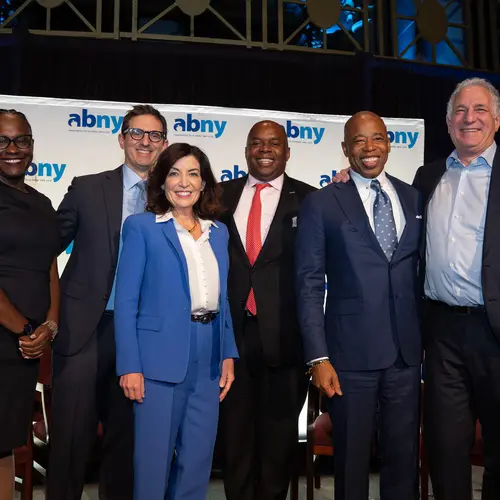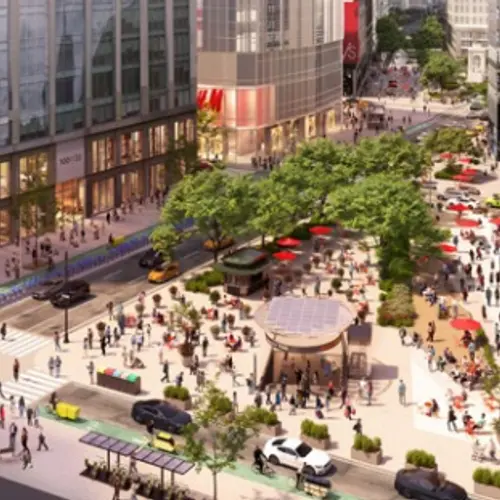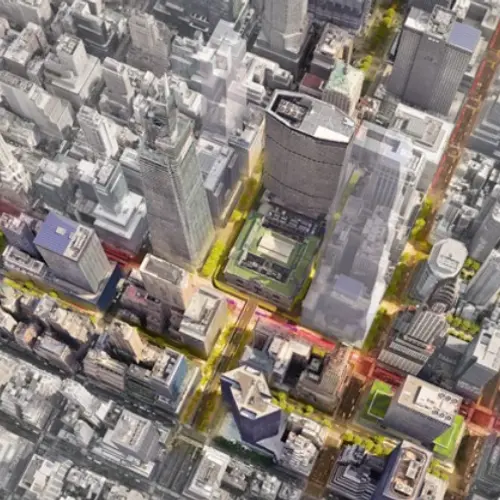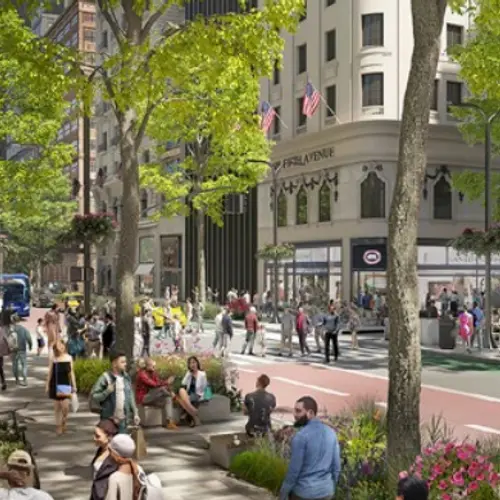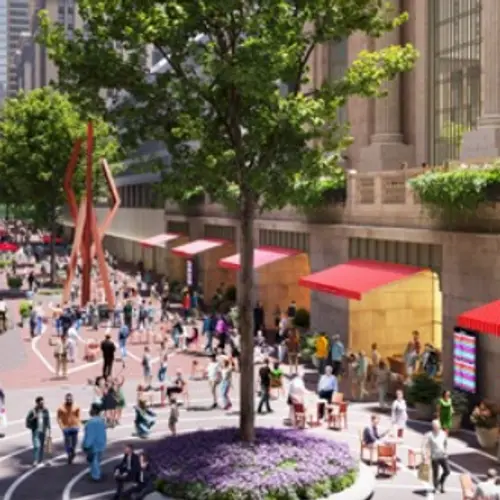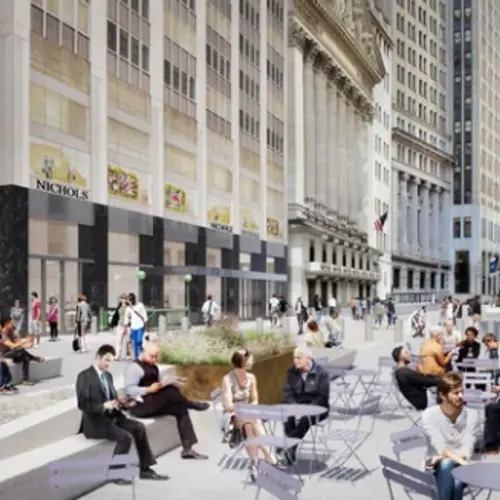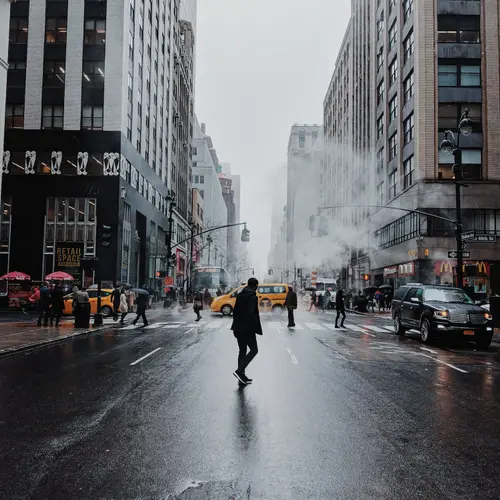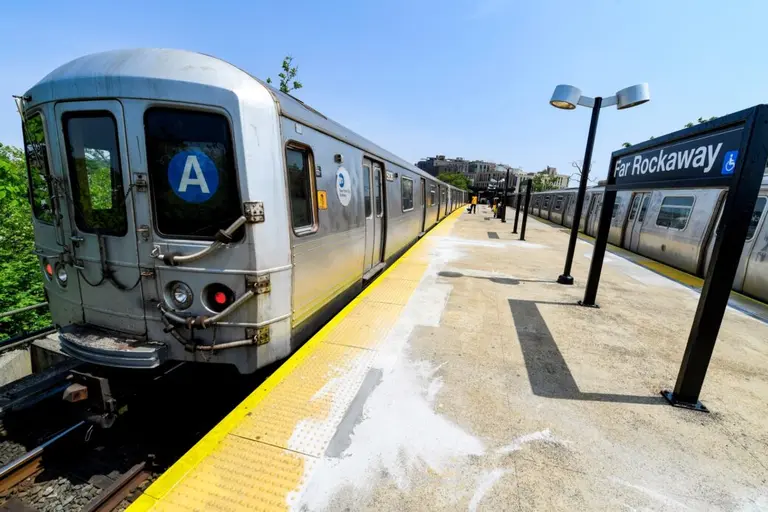Proposal calls for transforming NYC’s commercial districts into 24/7 destinations
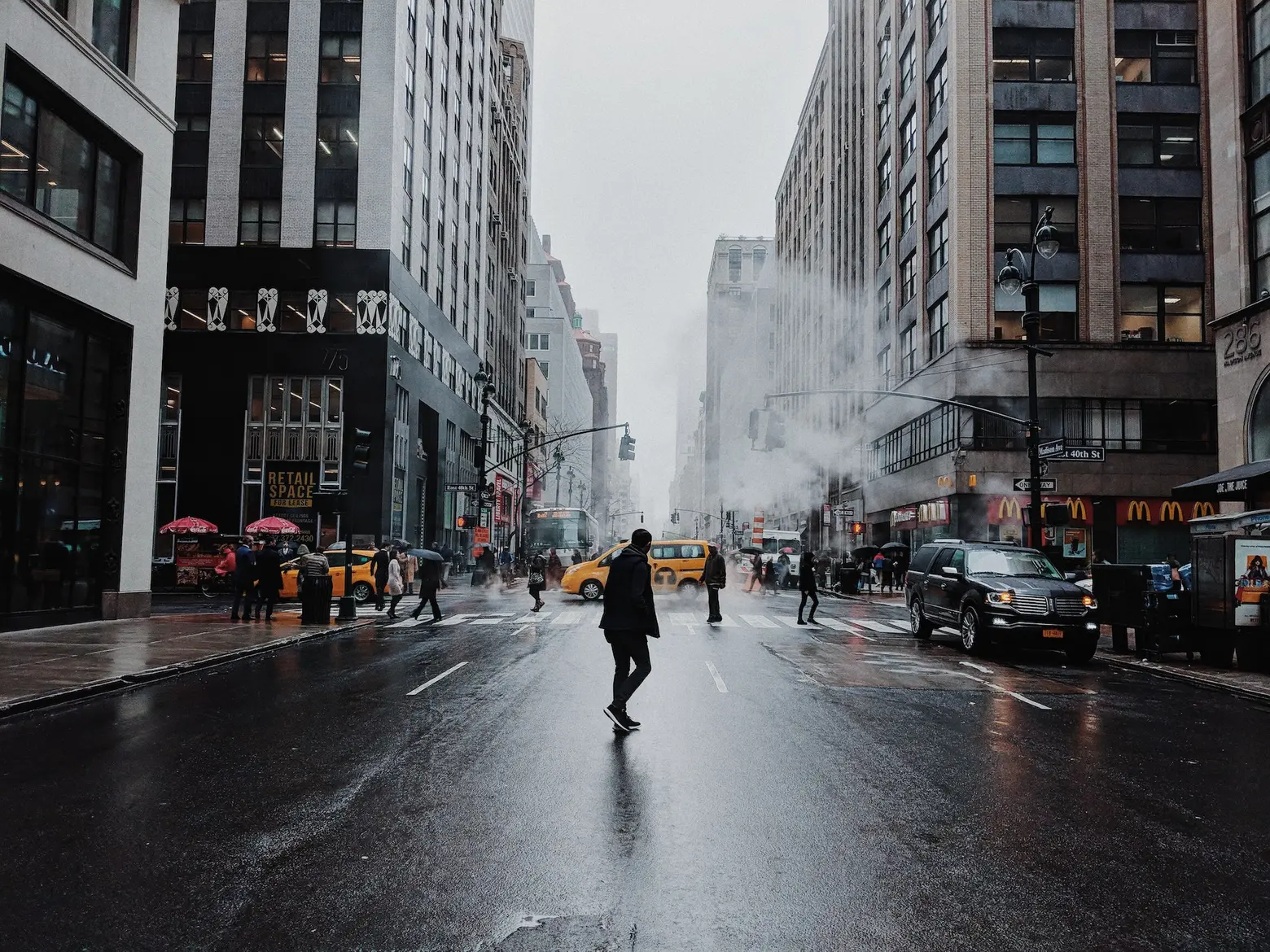
Photo by Patrick Tomasso on Unsplash
Gov. Kathy Hochul and Mayor Eric Adams on Wednesday announced a new plan to improve New York City as a place to live and work and help prepare it for a post-pandemic world. An essential part of the plan involves the reimagination of the city’s central business districts, Midtown and Lower Manhattan, by transforming them into dynamic, mixed-use neighborhoods that will draw more residents, businesses, and tourists. The plan also includes proposals to transform public space by expanding preexisting pedestrian spaces and envisioning new projects for the public realm.
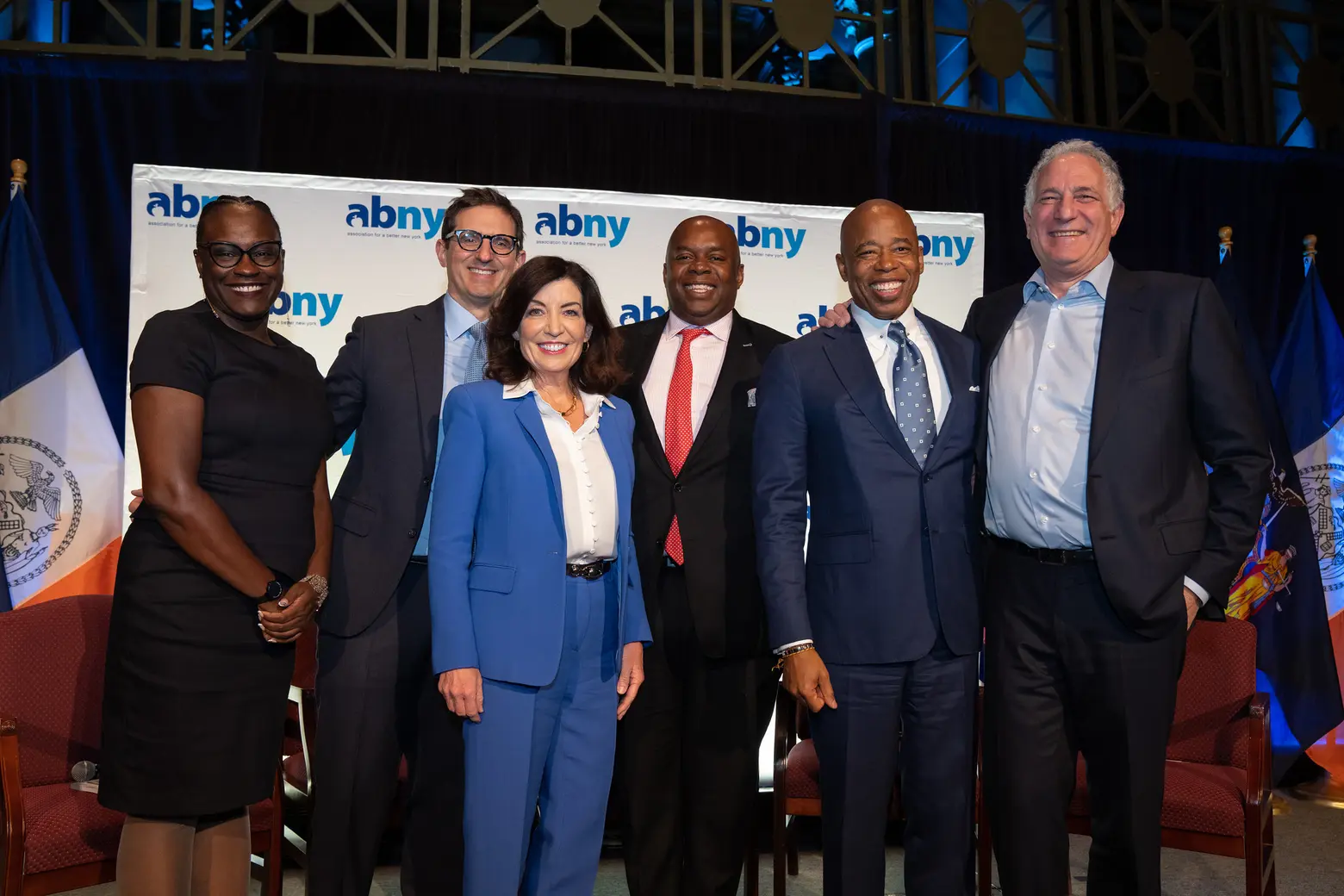 Image courtesy of Governor Kathy Hochul on Flickr
Image courtesy of Governor Kathy Hochul on Flickr
Known as the “New New York: Making New York Work For Everyone” action plan, the plan includes 40 proposals from a diverse cast of city leaders and business experts that is meant to be a blueprint for NYC’s future. The recommendations focus on the ways the city and state could work together and across different sectors to accelerate New York’s future growth.
All of the city’s business hubs outside of Manhattan, including Fordham Plaza, Bronx Hub, Broadway Junction, Long Island City, Jamaica, Flushing, Forest Hills, Downtown Brooklyn, and Dumbo, experienced a swift economic recovery post-pandemic, with consumer retail spending now exceeding pre-pandemic levels.
Midtown and Lower Manhattan, the city’s most well-known and historic business districts, have not experienced the same recovery. The city attributes this fact to the pandemic, which has resulted in more employees working from home and not traveling into these areas which depended on foot traffic.
According to the New New York plan, Midtown, Midtown South, and Lower Manhattan accounted for 45 percent of NYC jobs and 80 percent of all city office space pre-pandemic. These business sectors contributed 25 percent of the city’s property tax revenues and two-thirds of the city’s total GDP.
Likewise, foot traffic is also still down in Midtown and Lower Manhattan in relation to commercial areas outside Manhattan, with foot traffic down by 23 percent and 18 percent respectively.
To breathe life back into these areas, the city is looking to amend zoning restrictions that have prevented the creation of new, flexible residential areas and businesses for decades. The city has a vision of making these areas more “live-work-play,” rather than relying on the same policy model that has shown its age in this post-pandemic world.
During the State’s legislative sessions in 2023 and 2024, the New New York Panel will advocate for the conversion of vacant office buildings into homes, a solution that tackles both the housing crisis and lack of retail growth in one go.
Just as the panel will secure flexibility for office building conversions, the group will advocate for more flexibility for local businesses in these districts. The panel will modernize regulations, removing limitations on which kinds of businesses are allowed in business districts, and creating more transparent rules for businesses to follow.
Another part of reimagining the city’s commercial districts involves the creation of more public and pedestrian space. To increase the draw of these areas to new residents, businesses, and pedestrian foot traffic, the proposal calls for a variety of public improvements, including parks, plazas, wider sidewalks, faster buses, expanded bike lanes, and a more inviting landscape.
 Conceptual Rendering of Greeley Square, for illustrative purposes only. Rendering by FXCollaborative
Conceptual Rendering of Greeley Square, for illustrative purposes only. Rendering by FXCollaborative
The Broadway Vision Plan involves the creation of a lengthy corridor up and down Broadway, stretching from the southwest corner of Central Park to Union Square Park. This promenade would reimagine Herald and Greeley Squares and pass by Madison Square Park.
The Broadway Plan would help to strengthen Midtown’s river-to-river corridors, which are some of the city’s most traveled, and congested, streets.
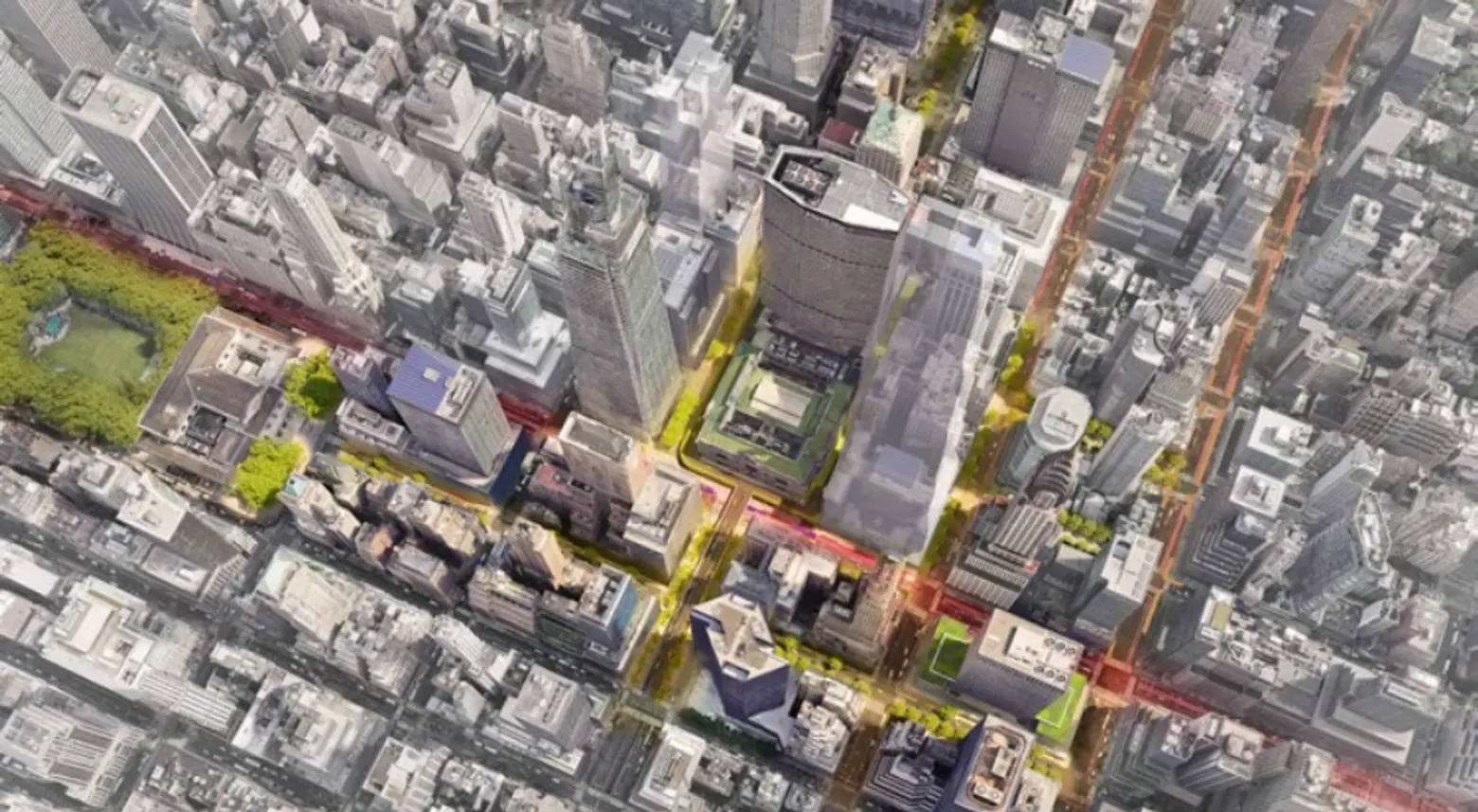 Conceptual Diagram of Potential East Midtown Public Realm Network, for illustrative purposes only. Rendering by FXCollaborative
Conceptual Diagram of Potential East Midtown Public Realm Network, for illustrative purposes only. Rendering by FXCollaborative
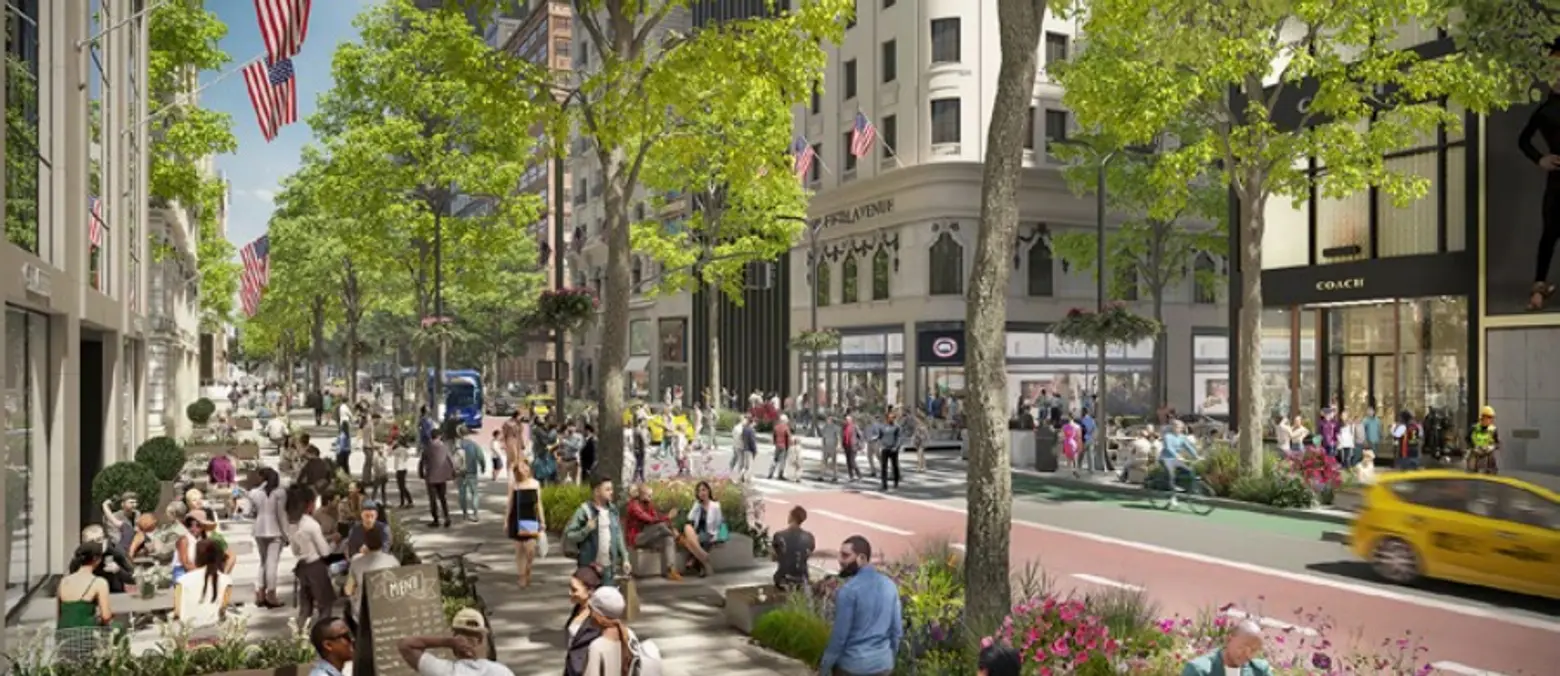 Conceptual Rendering of Fifth Avenue. Credit: Fifth Avenue Association
Conceptual Rendering of Fifth Avenue. Credit: Fifth Avenue Association
East Midtown would receive a variety of public improvements, including the expansion of the Pershing Square Plaza to East 40th Street, installing intersection improvements on Third Avenue, Lexington Avenue, and Park Avenue, and making the area spanning from Fifth Avenue from Byrant Park to Central Park a vibrant pedestrian corridor by adding lighting, seating, and wider sidewalks.
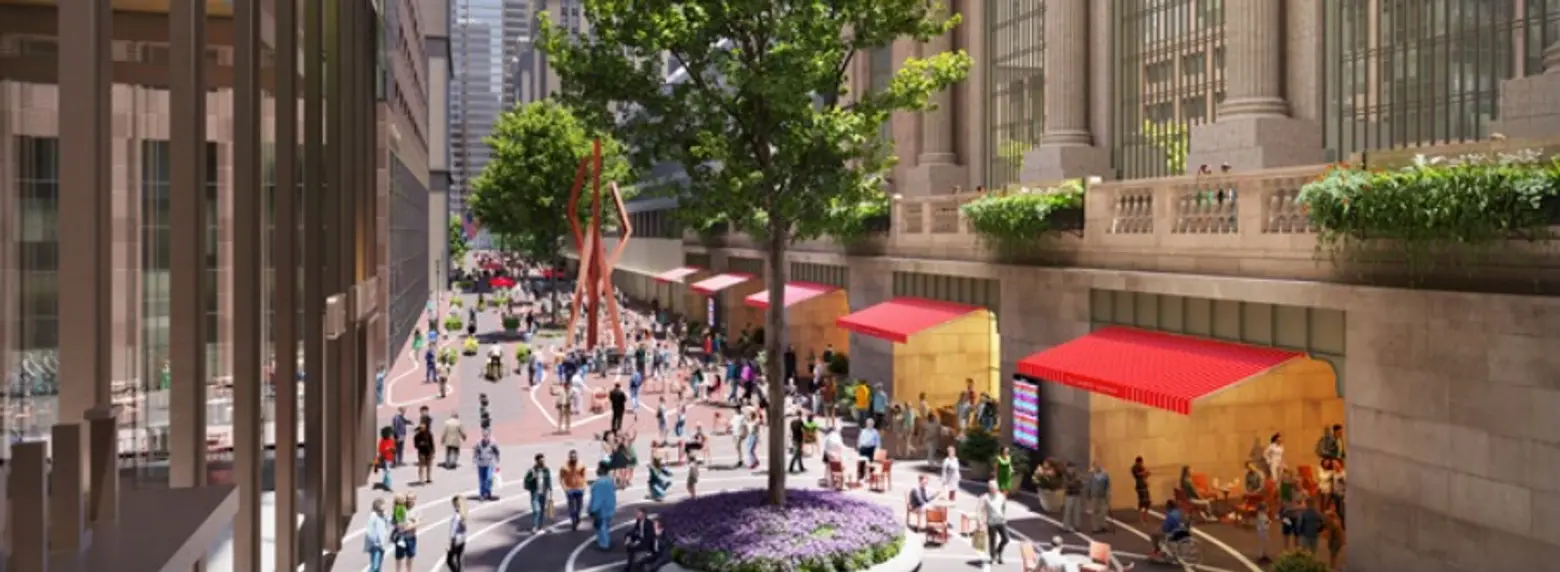 Conceptual Rendering of Shared Streets, for illustrative purposes only. Rendering by FXCollaborative
Conceptual Rendering of Shared Streets, for illustrative purposes only. Rendering by FXCollaborative
Public areas around major transit hubs, such as Times Square and Penn Station, would be improved with sidewalk expansions, more pedestrian islands, and by completing gaps in the current cycling network.
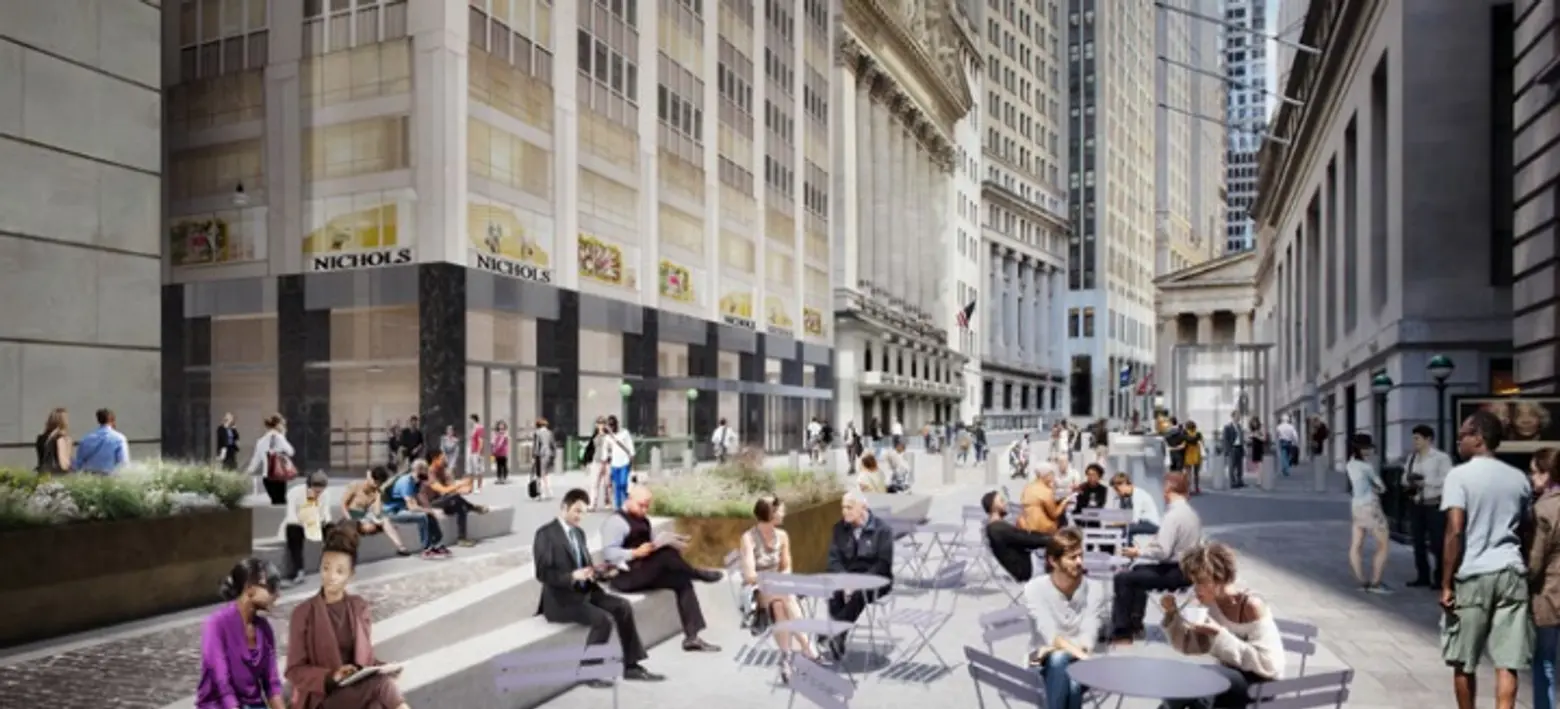 Conceptual Rendering of Broad Street. Credit: Downtown Alliance
Conceptual Rendering of Broad Street. Credit: Downtown Alliance
Opportunities to better the public realm in Lower Manhattan include new public spaces in the Stock Exchange District to give it a better sense of place, improve pedestrian mobility, and separate trucks from pedestrians. Proposed improvements would take advantage of the area’s dense, weaving street network by creating a “series of pedestrianized and shared streets.”
The plan also includes the establishment of flexible public spaces at the base of the Brooklyn Bridge in Lower Manhattan, which could be used for programming and public events.
“I am so proud that today, the New New York Panel, alongside Governor Hochul and Mayor Adams, are releasing our report — advancing a bold vision to reimagine New York post-pandemic as an inclusive, future-focused city, with central business districts where people live, work, and play 24/7; transportation policies that make it easier to get to where they want to go; and growth strategies that ensure that all New Yorkers benefit from our recovery,” Richard R. Buery, Jr., Co-Chair of the New New York Panel and CEO of Robin Hood, said.
“While the pandemic turned our world upside down, it also presented a generational opportunity to make New York City the best place in the world to live and to work.”
RELATED:
